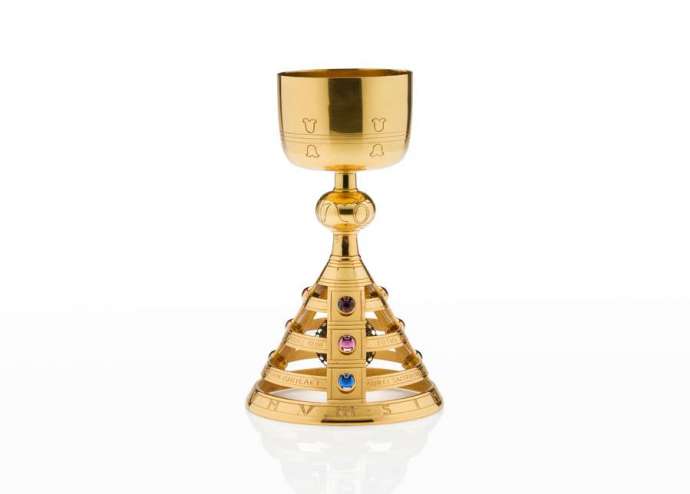STA, 27 June 2019 - An exhibition on famous Slovenian architect and designer Jože Plečnik (1872-1957) and his designs of sacred objects opened in the Vatican Museums on Thursday evening, featuring 33 selected liturgical vessels as well as video presentations of his sacred architectural works.
Related: Playful and Austere - A Visit to Plečnik's House in Ljubljana
The opening was attended and addressed by Prime Minister Marjan Šarec and Culture Minister Zoran Poznič.
Šarec said at a reception for Slovenian Statehood Day, which followed the opening of the exhibition, that Slovenia should be proud and happy as this was the first Slovenian exhibition in the Vatican.
"Jože Plečnik is the greatest son of Slovenian architecture. He was a deeply religious man, which is perhaps less known, and it is not a coincidence that he created objects which we admire today."
Minister Poznič said that it was one of the largest events in culture this year. "The exhibition tells us how our artist, master Plečnik, associated the spiritual and material works in his work," he was quoted by the Culture Ministry.
Labelling Plečnik as one of the greatest men in Slovenian cultural history, the minister said that the "exhibition is an exceptional opportunity, serving as a booster of what sometimes we as a society lack - self-confidence."
Barbara Jatta, the director of the Vatican Museums, is happy that Pinacoteca Vaticana is hosting an "important exhibition of sacral objects by Jože Plečnik, a great architect and designer of the 20th century".
"Plečnik created an original and innovative style, which shows both in his church architecture and in the field of liturgical vessels," Jatta was quoted by the Ljubljana Museum and Galleries (MGML).
According to Peter Krečič, an expert on Plečnik's life and work who arranged the exhibition in cooperation with the Plečnik House curator Ana Porok, Europe and the world truly discovered the greatness of the architect's opus after his work was presented at the Paris Pompidou Centre in 1986.
Primarily famous for being an architect and urbanist, he was also a great designer, with his work being mostly showcased in three European capitals - Vienna, Prague and Ljubljana.
He established himself at the beginning of the 20th century by designing the famous Zacherl Palace in Vienna, then moved on to renovating the Prague Castle and its vicinity, transforming them into the symbol and political centre of a modern democratic state.
Plečnik also turned his hometown Ljubljana into a modern capital, having designed iconic buildings and spaces there.
Encouraged by his brother, who was a priest, he started designing liturgical vessels in 1913, including chalices, ciboria and monstrances, thus revolutionising traditional concepts of such design by introducing modern, clear lines and simple decoration featuring gemstones.
Designing the vessels, Plečnik drew inspiration from the art of sculpture, which makes those designs stand out and provides that transcendent aesthetic value which is essential to experience the sacred, according to Krečič.
The exhibition, entitled Plečnik and the Sacred, has been put on by the MGML in cooperation with the Slovenian Embassy to the Holy See, the Culture Ministry, the Ljubljana Archdiocese and Vatican Museums.
According to the MGML, Plečnik is the first Slovenian artist whose work will be showcased at the Vatican Museums. The exhibition will run until 7 September.
On Wednesday, Pope Francis received sculptor and painter Miko Simčič, the author of a one-tonne bust of the pope, made of Carrara marble, and standing on a pedestal made of two-colour Hotavlje marble.
Simčič said he had made the bust with the pope's approval, which he sees as a great honour, as Pope Francis had so far been rejecting the idea. The bust will be housed in the Vatican, and the artist wants to make more of them and give them to various cathedrals around the world.
You can learn more about the exhibition here







